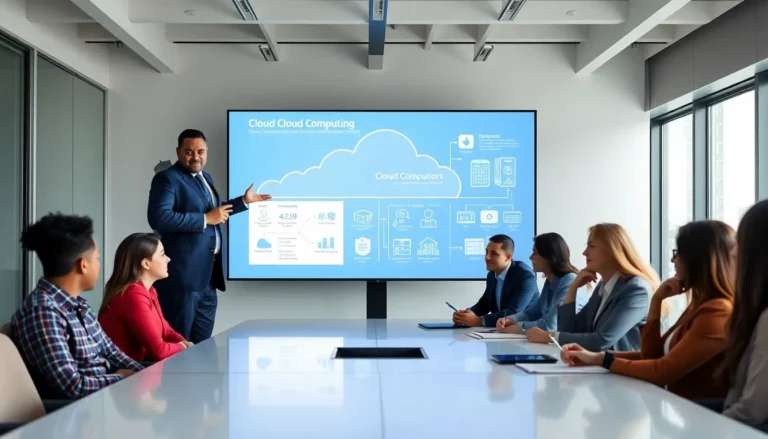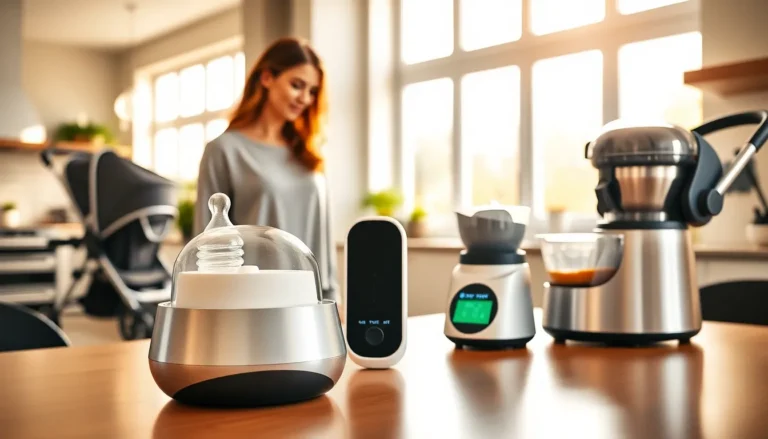Picture this: you’re blissfully tapping away at your computer, only to confront the dreaded loading screen of an application designed to streamline your life. Frustrating, right? But what if that app became an extension of your daily workflow, making your tasks smoother, faster, and even enjoyable? That’s the essence of a great SaaS experience. In the ever-evolving world of Software as a Service, understanding how to optimize this experience is not just a perk: it’s a necessity. Buckle up as we jump into the nitty-gritty of what makes SaaS truly shine.
Table of Contents
ToggleDefining SaaS Experience

SaaS experience essentially refers to the overall interaction users have with a Software as a Service product. This encompasses everything from the first click to ongoing usage. Imagine the moment you decide to explore a new software solution. Your initial impressions, navigational ease, and how well the software meets your needs all contribute to your SaaS experience. With unique dynamics, it isn’t just about using the tool: it’s about how seamlessly it integrates into the user’s daily tasks. In such a competitive environment, businesses must prioritize this experience, aiming to create something more than just a functional tool. A successful SaaS experience fosters satisfaction, encouraging users to stick around, think of it as a long-term relationship, not just a one-night stand.
Key Components of a Positive SaaS Experience
Importance of User Onboarding
User onboarding is where the magic begins. The first impressions matter more than ever. A smooth onboarding process ensures that users can jump into the software without feeling lost in a sea of confusing instructions. When users understand the features right off the bat, they’re more likely to keep using the service. Imagine walking into a room filled with clues designed to help you succeed. That’s user onboarding in a nutshell, giving folks a clear path to follow.
Design and Usability Considerations
Design isn’t just about aesthetic appeal, it’s about functionality. Great design intuitively guides users through their tasks. Dark mode, light mode? The choice can actually affect a user’s experience dramatically. A well-designed SaaS application will cater to user needs, ensuring that navigating through features feels as natural as flipping pages in your favorite novel. Usability matters so much here: the easier a product is to use, the more delightful the experience becomes.
Customer Support and Engagement
Measuring User Satisfaction and Feedback
When it comes to customer support in SaaS, it’s all about being there when users need assistance. But how do companies gauge whether their customers are happy? User satisfaction surveys and feedback tools can reveal core insights. Regularly checking in with users is vital: think of it like a pulse check for your product. If customers express unease about navigation or functionality, it’s time for a proactive approach.
Tools and Metrics for Assessment
Various tools exist to help feedback collection. Net Promoter Score (NPS), Customer Satisfaction Score (CSAT), and even Customer Effort Score (CES) can paint a clear picture of user engagement and satisfaction. By keeping tabs on these metrics, companies can fine-tune their offerings to meet user demands better. It’s the ultimate win-win scenario.
Continuous Improvement Strategies
Creating a stellar SaaS experience isn’t a one-time event: it’s an ongoing process. Continuous improvement strategies are pivotal. Regular updates based on user feedback can help keep the product fresh and user-centric. Consider establishing a feedback loop where users can share their insights directly with your development team. This can help adjustments that ensure the software continues to meet evolving needs. Also, Agile development methodologies can enable quicker iterations to address user concerns effectively. By creating a culture of feedback and adaptability, companies can enhance their SaaS experience exponentially.
Case Studies: Successful SaaS Experiences
Let’s take a moment to shine a light on some standout SaaS companies that have mastered the experience game. Take Zoom, for example. Their intuitive user interface and responsive performance during remote working surges made them a household name. Customer feedback shaped their features, including breakout rooms and enhanced security measures, directly responding to user needs. Similarly, Slack transformed team communication by understanding that user experience hinges on simplicity and efficiency. Their continuous enhancements speak volumes about their commitment to the SaaS experience. Reviewing these success stories shows just how powerful an optimized SaaS experience can be.





